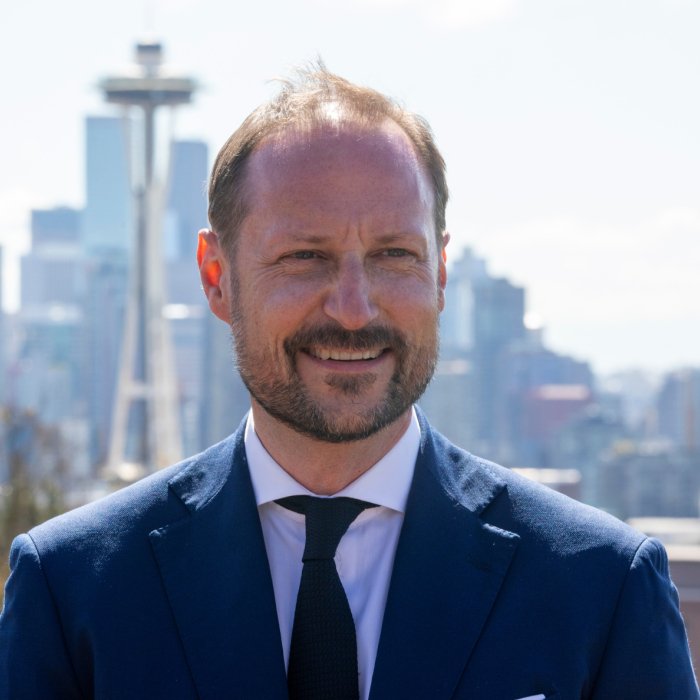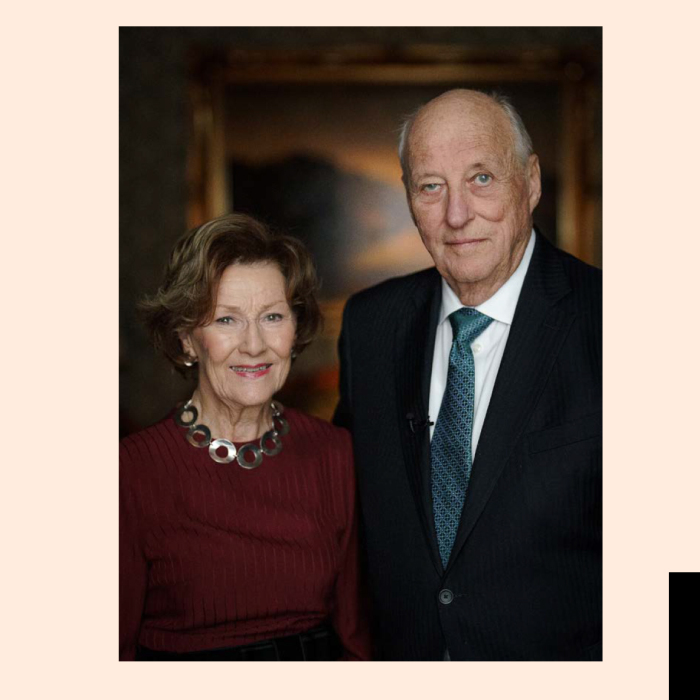"Norway thanks you"
His Majesty King Harald was in attendance at the commemoration of the liberation of East Finnmark. Seventy years have passed since Soviet forces drove the German occupying power out of the districts surrounding Kirkenes.
This is where it all began. The liberation of East Finnmark was the beginning of the end of the Second World War in Norway.
The formal ceremony took place at Kirkenes Square. Both Norwegian and Russian veterans were present, as was the Minister of Foreign Affairs of the Russian Federation, Mr Sergey Lavrov. King Harald addressed the crowd:
“Norway has never forgotten, and will never forget, the enormous contribution of our Russian neighbour towards securing our freedom in our hour of need. Many hundred Soviet soldiers fell in the battles in East Finnmark in autumn 1944. Of the nearly 100 000 Soviet prisoners of war who were sent to Norway, more than 13 000 died here, and have been laid to rest in Norwegian soil.”
We will also never forget the contribution of the Soviet people towards the day, six months later, when the bells of freedom finally rang throughout the whole of Europe, announcing that the agony of war was over and that peace could once again prevail on our continent.
In Vestre cemetery in Oslo, as here in Kirkenes, there is a monument to the Soviet soldier. It bears only a short inscription on its base:
NORWAY THANKS YOU
Three simple words. But no more are needed. They hold what we felt then, and what we feel here today.”
The Mayor of Kirkenes, Ms Cecilie Hansen, spoke after the King. She too extended heartfelt thanks to the veterans who fought and to those who rebuilt a shattered Finnmark. She also pointed out that Norwegians then had been forced to flee from war, a situation in which many others in the world find themselves in today. Now it is we in Norway who live in peace and who can offer our help to those in need.
Wreath-laying at the monument to wartime mothers
Following the speeches, King Harald lay a wreath at the monument to wartime mothers. There was a minute of silence before the national anthems of the Russian Federation and Norway were played.
Afterwards, Sami, Norwegian and Russian children lay flowers at the monument.
King Harald travelled from the square to Grenselandmuseet (Borderland Museum), where he was given a brief guided tour before lunch. The next stop on the programme was the village of Bjørnevatn.
Bjørnevatn
The Soviet soldiers who arrived in Kirkenes found a town that had been levelled and appeared to be deserted. However, some 3 500 people had sought refuge in a tunnel in the iron ore mines at Bjørnevatn, roughly 10 kilometres south of Kirkenes. On 25 October 1944, they could finally emerge from the depths and greet their liberators from the Red Army.
The people gathered at the Rørbua bathhouse close by and raised the Norwegian flag – the first flag to be raised in a free Norway. The Rørbua became the administrative centre for the liberated part of the country. The commemorative event on Saturday continued here, with speeches by Norway’s Prime Minister, Ms Erna Solberg, and Russia’s Minister of Foreign Affairs, Mr Sergey Lavrov.
Rørbua and 1944 mine tunnel declared protected
These two important sites in the history of the liberation of Finnmark – and Norway – were declared cultural heritage sites in an official ceremony led by the Director General of the Directorate for Cultural Heritage, Mr Jørn Holme, and Chairman of the Tschudi Group, Mr Felix Tschudi. Young people from Bjørnevatn school walked out of the tunnel in a procession and the Norwegian flag was once again raised at the Rørbua by Mr Are Vorren, one of the remaining survivors.
The Rørbua, which had been in a state of decay, recently underwent extensive preservation and restoration work, and was newly refurbished for the ceremony.
Met with veterans
After the ceremony, His Majesty greeted Norwegian and Russian veterans from the battles in Sør-Varanger municipality. He also had the opportunity to meet five of the people who were born in the mine tunnel in 1944, as well as representatives of the friends of the mine association.
Current news

The Crown Prince in the US
His Royal Highness Crown Prince Haakon concluded a four-day visit to the US Thursday. The visit went to the states of California and Washington, and several hundred Norwegian business actors accompanied him on the journey.

The Royal Court has submitted its annual report for 2023
The activities of the Royal House of Norway over the course of the year are closely aligned with the current situation in the country.

 Enlarge
Enlarge
